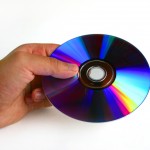Subjects
Study and learn techniques from a Grammy Award Winning Sound Mixer in one of the most famous studios in the world. Learn in the same studio where the music you listen to was recorded and mixed.
Attendees will learn “tricks of the trade” from world renowned recording engineers, mix engineers, mastering engineers and producers; observing and participating in the recording (tracking), overdubbing, mixing and mastering. The Instructors will personally select the artists and all participants will get a “hands on” experience.
Instructors will bring in a band and attendees will record, overdub, mix and master 3 songs. Attendees will go home with a CD copy these tracks they help to produce, along with a DVD of their experience at the school that will be mailed to them shortly after.
The areas that will be covered include:
Multi Track Recording or Tracking:
Multitrack recording (also known as multtracking or just tracking for short) is a method of sound recording that allows for the separate recording of multiple sound sources to create a cohesive whole. Multitracking became possible with the idea of simultaneously recording different audio channels to separate discrete “tracks” on the same tape. A “track” was simply a different channel recorded to its own discrete area on tope whereby their relative sequence of recorded events would be preserved, and playback would be simultaneous or synchronized.
In the 1980s and 1990s, computers provided means by which both sound recording and reproduction could be digitized, revolutionizing audio distribution. In the 2000s (decade), multitracking hardware and software for computers was of sufficient quality to be widely used for high-end audio recording. Though magnetic tape has not been universally replaced as a recording medium, the advantages of the non-linear editing (NLE) and recording have resulted in digital systems largely superseding tape.
Overdubbing:
Overdubbing (the process of making and overdub, or overdubs) is a technique used in audio recording, whereby a performer listens to an existing recorded performance, and plays a new performance along with it, which is also recorded. The intentions is that the final mix will contain a combination of these overdubs.
Tracking (or “laying the basic tracks”) of the rhythm section (usually including drums) to a song, then following with overdubs (solo instruments, such as keyboards or guitar, then finally vocals), has been the standard technique for recording popular music since the early 1960s. Today, overdubbing can be accomplished even on basic recording equipment, or a typical PC equipped with a sound card, using software such as Pro Tools.
Mixing:
In sound recording and reproduction, audio mixing or mix down is the process by which multiple recorded sounds are combined into one or more channels, for instance 2 channel stereo. In the process, the source signals’ level, frequency content, dynamics, and panoramic position are manipulated and effects such as reverb may be added. This practical, aesthetic, or otherwise creative treatment is done in order to produce a mix that is more appealing to listeners.
Audio mixing is done in studios as part of the creating an album or single. The mixing stage often follows Multitrack recording. The process is generally carried out by a mixing engineer, though sometimes it is the musical producer, or even the artist, who mixes the recorded material. After mixing, a mastering engineer prepares the final product for the reproduction on a CD, for radio, internet or otherwise.
Mastering:
Mastering is normally done by experienced professional Mastering Engineers, working in specially designed Mastering Studios.
As the last technical and creative stage in music production, mastering prepares final mixes created by a producer or engineer for commercial manufacture and distribution to consumers in a variety of mediums: CD, Internet, Vinyl, Radio, and others.
Using a combination of aesthetic and technical processes, mastering ensures a mix achieves its maximum sonic potential, and meets the requirements of various types of playback methods.
Originally an entirely mechanical (analog) process for creating vinyl records, contemporary mastering uses a combination of high quality hardware-based sound processors, and specialized digital software.
Subjects Covered:
- Reasons For Mastering: Polishing, Correcting, Re-Mastering
- Critical Listening
- Translating Mixes For The Real World
- Mixing For The Medium – Digital vs. Analog
- Mastering For The Medium: Vinyl / CD / Broadcast / Internet Correction
- Enhancement: Equalization,
- Compression, Limiting Editing, Technical Correction, Noise Reduction
- Mastering
- Studio Acoustics & Monitors Matched Peaks (Leveling) vs Matched
- Averages Compression
- Loudness Wars
- Mastering For Vinyl
- Mid-Side and Stem Mastering
- CD Assembly: Running Order, Pauses, Fades, P&Q Codes, Metadata
- CD Manufacture: Replication vs Duplication
- Console Operation: SSL
- Console Operation: API
- Acoustics Track
- Programming
- Practical Recording
- Pre-Production
- Analog Signal Processing
- Digital Signal Processing
- Live Sound Mixing & Mastering
- Music Production
- Music Studio Etiquette
- Location Sound Recording and Mixing
- Post-Production
- Essentials
- Music Editing
- Background and Sound Effects Editing
- ADR and Dialogue Editing
- Mixing and Conforming
- Monitor Setup and Operation
- Live Recording and Mixing
- Live sound applications


